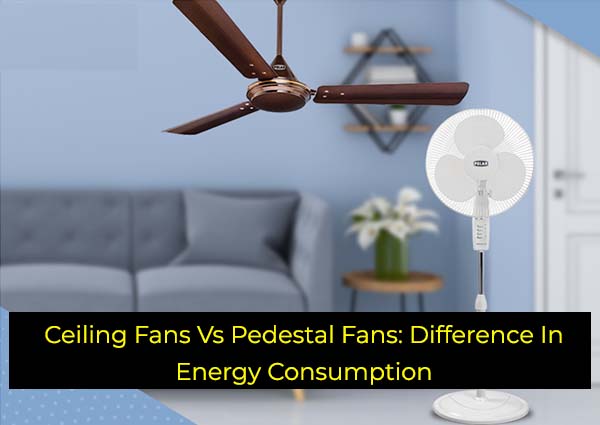Ceiling Fans Vs Pedestal Fans: Difference In Energy Consumption
Confused about how to actually lower your energy consumption? Then you should bring home high speed fans.
A fan is a must-have appliance for your home, the significance of a ceiling fan can never be neglected. Modern fans with automatic control and a classy finish have replaced conventional fans. One such great addition is power saving fans. Now, let us take a good look at how different fans use energy for functioning, particularly sealing and pedestal.
Some factors on which energy consumption of Ceiling Fans & Pedestal Fans Depends
Pedestal Fans
In case of a standard pedestal fan the electricity consumption mostly depends on the speed at which it runs. Generally, if we talk about a pedestal fan, it consumes about 50-55 W power. The prominent factors on which the power consumption depends are:
Size of the Fan: the larger it is, the airflow is greater. Hence electricity usage also shoots up
Design as well as Weight of the Blades: Broader blades are the ones that contribute to more power consumption.
Speed Settings: If you simply adjust your pedestal fan at the lowest possible setting, it’ll require the least time. So, naturally, the higher the speed the more cost you’ll need to bear.
Ceiling Fans
A ceiling fan on the opposite hand requires 75-80 W. In addition, due to its elevated position and its ability to cover a bigger portion, it requires greater power.
Power consumption of ceiling fans depend on the following factors:
Height of Ceiling: for the proper air flow in every room corner, you need to previously check on the ceiling height. Accordingly, you need to select the apt ceiling fans.
Motor: Old fans run on motors that aren’t technologically upgraded. Therefore the value of old ceiling fans can be low but the power they consume is maximum.
Dust Present On Blades: Improper maintenance and continuous usage accumulates a lot of dust particles on blades. This reduces fan speed.
Here is some Advice from Us:
A variety of fans are now available within the market. But whatever fans you’re purchasing makes it a point to check all different kinds of safety issues. Moreover, due to short-circuiting or carelessness, accidents keep recurring. In this entire blog, we’ll look into the safety features and precautions that everyone needs to undertake while handling any gadget or appliance.
Do not invest in a second-hand electrical fan. Furthermore, we know budget matters, but are you ready to risk your lives? We assume not. Therefore, products that are old might face some hidden problems, and you also have to compromise on the efficiency as well. So, stay away from unknown problems.
Register your new fan with the company’s manufacturer. This’ll make it easier for you to contact them just in case of problems. In the end, if you find the product delivered is actually a faulty one, they’ll easily repair it or deliver a fresh one.
You do need to check the fittings of your ceiling fan blades cautiously. Ceiling fans that are wobbly can pose a grave danger. For more information contact Jagdamba Service or visit our website.

